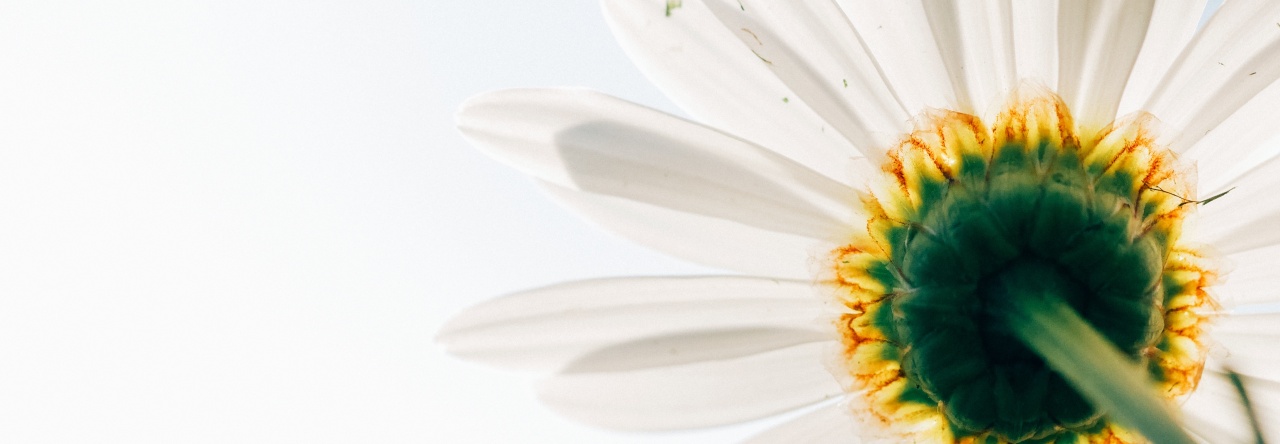Month: May 2017
Citizen Science! YOU Should Participate!
Citizen science played a huge role in AP Biology this year! Our two big field trips were based off of Citizen Science, and I am so glad I got to participate in them.
Check out my video on Citizen Science below:
Click here to read about the LIMPETS field trip at Pillar Point.
Click here to read about recording data at the Save the Bay Estuary.
My Response to “Botany of Desire”
In class, we watched Botany of Desire, a documentary that discusses human’s relationship with plants, from a plant’s point of view. Plants have always been known to conform to human desire. Plants fill the desire of beauty, control, sweetness, intoxication, and much more. Botany of Desire shows how humans are part of the web of nature by going to different parts of the world to explore interaction and history between plants and animals. Why are the plants that humans favor more desirable?
I included this info graphic to summarize key points throughout the documentary!
Botany of Desire starts its journey by exploring the forests of Central Asia, where the apple originated, then across the silk road and later reach America. Apples have been known to satisfy one’s craving for sweetness- desire for sweetness is innate because it notifies humans that they are getting enough calories and are not poisonous. Sweeter apples also had better chances of reproducing in nature because bears would eat the sweeter apples and the apple seeds would be spread through the bear’s waste. The documentary mentions Johnny Appleseed, who was known for planting apple seeds. Apple seeds do not transfer genetic traits down to their offspring. These apples had very low sugar content and were often known as “the evil apple” because they were used to make hard cider. Later in the 1990s, people starting grafting which is cloning a plant by using its sprout. Sweet apple trees took over and the apple was rebranded as a health food. While hearing this story, I thought back to the idea, “do we control plants to fit to our liking, or do plants adapt on their own and use humans as an advantage?” I think that humans and plants benefit off of one another. Humans do not control plants and plants do not evolve specifically to adapt to humans.
The next stop in the documentary is the Netherlands in 1637, where “Tulip mania” occurred. Tulips gardens became a symbol of wealth.. Broken tulips, or tulips that had multicolored petals, the most rare tulips, were considered the most beautiful and were the most desirable. Planting a tulip bulb (the part of the plant underneath the ground) is the only way to ensure that the tulip offspring will have identical traits to its parent.The Dutch became very successful in world trade for their tulip bulbs. People were paying fortunes for tulip bulbs that produced Broken Tulips, which soon lost their worth, leading to the end of of “Tulip Mania.” The tulip was blamed for the economic disaster. For this situation, I do not think that the Tulip had anything to do with its reproductive success, only the people did. Tulip mania shows how humans can affect the success of a plant, allowing Tulips to spread throughout the Netherlands and the homes of their trade partners. Without humans, Tulips would not have spread as rapidly because they occupied mostly home gardens. In the documentary, the phrase “exquisitely useless.” I think that this phrase shows how humans will invest in luxury, even if its only purpose is to be visually attractive. The Tulip was lucky to have been planted in various places, but the luck ended when Tulips were no longer a trend.
Botany of Desire also talks about Cannabis, often called “Marijuana” throughout the world. Cannabis produces a psychoactive resin called tetrahydrocannabinol, known as THC. Marijuana is illegal in most countries, however, it used to be used as a pain treatment for labor pains, rheumatism, and asthma. Marijuana soon developed a negative connotation, in 20th Century, Marijuana was smoked by Mexican immigrants. The habit soon spread to the jazz community, becoming a large part of the 1960s generation. The government forced Mexican pilots to spray Herbicide poison on the marijuana fields in hopes to end all Marijuana crops. Growers then decided that they had to grow indoors and in secret if they wanted to continue to have a profit. The marijuana that has been growing was 12 feet tall so growers bred two strains that made the plants become shorter, faster, and grow stronger. Cannabis requires specific environments to produce THC, which demanded lots of time and efforts for growers. Something I found really interesting, is how marijuana farmers specifically separated male marijuana plants from female marijuana plants. Female marijuana plants produce a resin that pollen (from male plants) to, so separating the male and female plants ensured that the female plants would produce more resin in hopes to attract pollen. This growing technique allowed growers to yield a more plant that had higher THC potency, making the crop more expensive. This process shows how humans are able to manipulate plants to their liking. Like the Tulip and apple, cannabis was changed and planted throughout the world to satisfy humans.
Another plant discussed in Botany of Desire was the Potato. The potato was a very practical crop that needed few people to tend to it, thrived in cold weather, and was a good food source Ireland became VERY dependent on the potato for food. The Irish planted mone type of potato, AKA the “lumper,” which became a monoculture. A monoculture is when one species/plant/breed is planted at the same time. In 1845, a ship was carrying a fungus contained wind spread spores which spread through Ireland and killed all the potato crops. The famine killed 1 million people (1 out of 8 people in ireland). This example shows how humans have a large effect on plant populations, but also how nature can create changes beyond the human control. Despite the Irish potato famine, the potato is still a common food in modern days throughout the world. Each year, Americans consume about 7 and a half billion lbs of french fries. Fast food industry relies on the russet burbank potato, which is long enough to produce fries that fit America’s standards. In the documentary, Michael Pollan states that “Monocultures of the plate lead to monocultures of the land.” This quote means that when humans have a strict desire for a particular food, then it greatly affects the crops that will be grown.
After watching the documentary, I reflected on how much society can affect the world around us. That may sound like something obvious, but human desires do influence plants. Nature may sometimes overrule human efforts, as shown during the potato famine, but plants and humans both affect one another in positive ways. Whether humans are manipulating crops, or seeds germinating in a foreign place, plants and humans will always rely one another.
Interview with Neurosurgeon, Dr. Anand Veeravagu
In Senior Synthesis class, we were given the assignment to interview someone with our career of interest. I decided to share this video with my fellow biology lovers who may have interests in the medical field.
I interviewed Dr. Anand Veeravagu, Neurosurgeon at Stanford. I met Dr. Veeravagu at Stanford Univeristy’s event, Med School 101. Dr. Veeravagu spoke about the growing concern about brain injuries. I was very captivated throughout the entire presentation and immediately wanted to learn more!
Learning about Dr. Veeravagu’s path on becoming a Neurosurgeon and his overall career was so much fun! Talking to him definitely making me more excited about the possibility of pursuing a medical career.
Special thanks to Dr. Anand Veeravagu for taking the time to answer all my questions!
Wolbachia is all Around Us
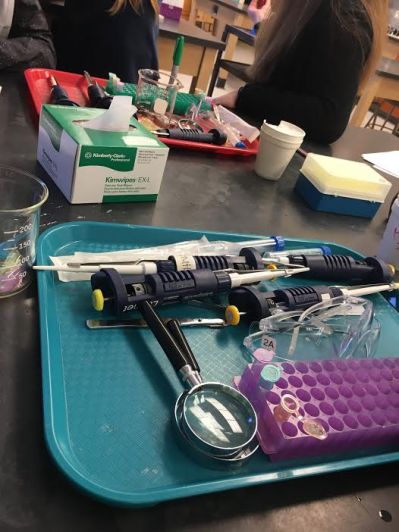
We have finally come to the last lab of the school year! 😥 It is amazing to see how far we have come! Our lab studied Wolbachia in insects. I have never heard about Wolbachia until this lab, and was surprised to find out how common Wolbachia is in insects all around us!
Wolbachia is genus of bacteria that infects mostly arthropods and some nematodes. Wolbachia can be transmitted horizontally or vertically from parent to offspring in the female’s eggs. Something I found very interesting, is Wolbachia’ special ability to alter the sex of its host, which has given Wolbachia an advantage for reproducing. Altering the sex of its host gives Wolbachia an advantage because Wolbachia can only be passed down to offspring by females; males cannot pass down Wolbachia to their offspring. Infected females can only be only successfully reproduce with males that are infected with the same strain of Wolbachia bacteria. The sex ratio distortion may have a negative impact on the host population because with a large female to male ratio, it can be presumed that some females may not be able to mate and reproduce.
While researching, I learned that Wolbachia is safe for humans and animals and is being studied for its properties that will help kill viruses in mosquitoes and stop viruses from spreading to people. Scientists are conducting studies on Wolbachia to help eliminate Degnue fever! Click here to learn more about Wolbachia’s role in fighting Dengue fever.
The purpose of this lab was to conduct a DNA analysis to determine if an insect is infected by Wolbachia. We started by collecting anthropods and bringing them to the lab in vials that contained alcohol, and placed them in the freezer. Michelle and I shared an ant sample and collected its reproductive parts by crushing the ant’s abdomen. We had to then separate a segment of DNA from the rest of the bug. We then used the PCR machine to replicate segments of DNA.
Watch the video below to see how PCR works!
We used gel electrophoresis, a process that uses electricity to separate segments of DNA, to compare the samples to a ladder and positive control to see if Wolbachia DNA was present. If no Wolbachia was present, then there would be one mark shown on the gel. If the insect DNA sample did contain Wolbachia, then a second mark would appear. The ants that Michelle and I tested were negative for Wolbachia. Insects were collected from Burlingame, Brisbane, San Carlos, and Palo Alto. 4 of the insects contained Wolbachia, which mainly came from San Carlos! Mrs. Girard said that our class had the most insects with Wolbachia compared to years past, which most likely means that Wolbachia is infecting larger populations.
Aside from learning about Wolbachia, this lab allowed us to practice different biotechnology tools. I enjoyed using various biotech skill in this lab such as micropipetting, PCR, and gel electrophoresis. I PCR includes several steps, but my lab group and I made sure to work at the same pace to ensure that we were all on track! felt a little rusty picking up a micropipette again, but I was very excited to use it! This lab was very focussed on precision, so before we used to micropipette, we asked our AP Bio teammates to double check the measurements. My favorite step is the gel electrophoresis process because it is awesome to compare the different strains of DNA against one another!
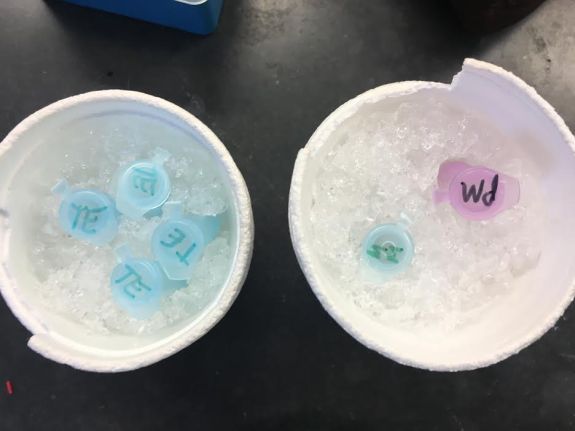
This lab was so much fun and it reflects the entire dynamic of AP Biology class this year. It was awesome to look back and see how much expirience I have gained because of this class! I am very excited for labs in college, but I will definitely miss the fun, engaging, and safe space of the AP Biology classroom.
Round up 5/14- 5/29
The year is quickly approaching the last days of school. We have finally become AP Biology veterans!!!
This week, we each made videos giving our advice to the Future AP Biology Team 2017-2018. While creating my video, I was taken back to the first week of school. Mrs. Girard presented the videos from the year prior to us. It is crazy to think that WE are now making the videos for the next bio class. I talked about being organized being engaged, and being open-minded. I remember watching the videos from Team AP Bio 2015-2016, and almost each video mentioned to be organized. I am not very proud of this, but I have always been a messy person. I started the school year very organized and on top of my schoolwork, but would become more and more disorganized as time went by. I also noticed that drops in my grade correlated to my lack of extra efforts in the class. Although I did not mention this in my video, AP Biology has taught me that it is necessary to put in extra work to get the results you want. It may seem like there is a heavy workload for AP biology class, however, taking the extra step to research and study on your own will help you later. If you have a clear understanding of content early-on, then later material and concepts will make much more sense. This brings me to my next topic of advice, to be engaged. I was very intimidated when the year first started, I felt that I was surrounded by some of the brightest minds in the school, making me feel insecure and nervous to ask questions. I later found out that this is such bogus!! Yes, my AP Biology teammates are just as smart (or even smarter) than I have assumed and expected, however, each team member truly encourages one another and wants each person to succeed! It is fine to ask a question that may seem silly; chances are, the person sitting next to you is probably wondering as well. Participating in discussions (on Schoology, blog posts, and in class) will allow you to get more of a grasp on the content and make connections. I also learned that if I feel like I am falling behind, Mrs. Girard and my AP Bio teammates are willing to help me, as long as I reach out to them. My last tip was to be open-minded. As mentioned earlier, lots of things can make this class seem intimidating, and on top of that, many activities done in labs or on field trips may seem gross or weird! I learned that it is okay to be nervous. On our second field trip, we went to Pillar Point tide pools. A bunch of the girls in our class ran out and started different organisms, when I was set on making sure that my hands stayed dry. Sea anemones are cnidarians, which are aquatic vertebrae that eject nematocysts from their tentacles. When a person’s finger touches the anemone, the anemone responds by wrapping its tentacles around the person’s finger. I decided to try it myself, and although it felt weird, I am glad to say that I still tried it! Same goes with dissection. Many girls felt uneasy about dissecting the fetal pigs, but later ended up enjoying being the “surgeon” by making incisions and and locating certain body parts. I thought I would be nauseous during the dissection, but I ended up finding a great interest in seeing how the parts of the body connected, especially in a real animal. If I was not open-minded about dissections, I could have missed out on an amazing learning opportunity. To be open-minded is key, because you never know if you might enjoy something or learn something new.
I am very excited for those who are lucky enough to take AP Biology next year! For now, I will reminisce on the days where I felt very new to the AP Bio setting! It is such a great feeling to look back on the school year and remember everything I have learned; I hope the future Team AP Bio will be able to do the same!
Click here to check our my advice to the future Team AP Bio!
Some of my favorite memories from this year:
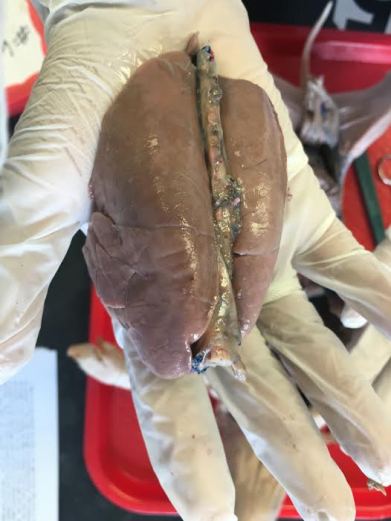

Dear Future Team AP Bio
The final days of the school year are quickly approaching! Throughout the course of this class, aside from gaining a deeper knowledge about biology, I learned lots about myself and my study habits! I had an amazing expirience taking AP Biology am so glad that I decided to take the class!
To excell in this class, you will have to put in lots of good effort and 110% dedication! If you will be taking AP Bio, I hope you are very excited!!
Here is my advice to those who will be taking AP Biology next year:
AP Biology Exam Reflection
It is so crazy to think that we already finished taking the AP Biology exam! The exam felt like it snuck up on us…all of a sudden it was the month of May (I guess time does truly fly when you are having fun). Although I was very nervous about the test, I felt like I was very prepared once I opened the pages of the test booklet. The test consisted of a multiple choice portion and was followed by 8 free response questions. I was able to pace myself throughout the multiple choice section and finish answering each question. Pacing myself for the free response questions was very difficult for me because I spent too much time answering the first two long response questions. Unfortunately, I left one question blank and one question unfinished. Luckily, I skimmed through the shorter questions and noticed that the last two prompts were about material I was very confident on, so I quickly answered those first. My hand was very tired by the end of the test LOL, but the three hours honestly flew by and the test felt like it ended so quickly!
Of course I am disappointed that I did not finish the short answer portion, but I am still proud of myself for everything I have accomplished this year. Each lab, project, class presentation, blog post and homework assignment all greatly contributed to not only my understanding of biology content, but improved my work ethic, time management, focus, and helped me become an overall better student and learner. Of all the classes I have taken at Notre Dame, AP Biology required the most effort and time, however it was most definitely worth it. The AP Biology exam was hard, but I felt proud seeing all of the knowledge I have gathered over the past year as I filled out my answers.
Placing the seal to shut the AP exam booklet might just be the most relieving feeling I have ever experienced. I must remember that there is nothing I can do to affect my score at this point, and that all I can do is wait to receive my scores. Until then, I need relax and enjoy my last few days as a high school biology student. If anything, biology taught me that it is possible to learn something new each day, and that learning is truly a gift. Even over summer vacation, I hope to learn something new each and every day!
The Immortal Life of Henrietta Lacks Reflection
 Imagine this- your family is struggling with monetary issues, you can feel your health quickly declining, and then scientists take your cells without consent and are making a huge profit out of your own cells. In the novel, The Immortal Life of Henrietta Lacks, written by Rebecca Skloot, an African American woman by the name of Henrietta Lacks, had her cancerous tissue taken without her approval. These cells were studied by a John Hopkins gynecologist and were found to have the ability to multiply and live outside of her body. Henrietta’s cells (known as HeLa cells) created a huge profit for scientists because they multiplied indefinitely and were able to survive outside of her body. Unfortunately, Henrietta passed away at thirty-one years old. Her husband’s cousin and his wife moved in to take care of Henrietta’s young children; the couple ended up being very abusive to them. Her children later discovered that her mother’s cells were being studied and had made lots of profit for scientists, while her and her family were struggling in poverty.
Imagine this- your family is struggling with monetary issues, you can feel your health quickly declining, and then scientists take your cells without consent and are making a huge profit out of your own cells. In the novel, The Immortal Life of Henrietta Lacks, written by Rebecca Skloot, an African American woman by the name of Henrietta Lacks, had her cancerous tissue taken without her approval. These cells were studied by a John Hopkins gynecologist and were found to have the ability to multiply and live outside of her body. Henrietta’s cells (known as HeLa cells) created a huge profit for scientists because they multiplied indefinitely and were able to survive outside of her body. Unfortunately, Henrietta passed away at thirty-one years old. Her husband’s cousin and his wife moved in to take care of Henrietta’s young children; the couple ended up being very abusive to them. Her children later discovered that her mother’s cells were being studied and had made lots of profit for scientists, while her and her family were struggling in poverty.
I thought that this story was very well-written because it discusses important scientific content, while building an emotional connection between all the characters. An important theme highlighted in this novel is ethical issues regarding science. Since I share a love for science myself, I completely see why the scientist from John Hopkins wanted to take her cells…his motive could have been understanding the potential for a scientific breakthrough, possibly finding a cure for Henrietta, or even pure curiosity. The medical community greatly benefitted from knowledge about HeLa cells, however, it was very unethical for him to research the cancerous tissue without Henrietta, or her family’s, consent. Furthermore, the Lacks family is struggling to even find money to see a doctor, while scientists are profiting out of their wife/mother’s cells. In contemporary times, I am glad that it is very important and necessary that proper consent is required before scientists do any research using a sample from a human.
Overall, I personally really enjoyed the novel and would recommend it to anyone, science lover or not! Skloot does an amazing job and keeping the plot fascinating and makes you feel sympathy for the Lacks family. I suggest you read this book!!
Click here to learn more about Henrietta and the Lacks family!
Should we Use Drones to Pollinate Crops?
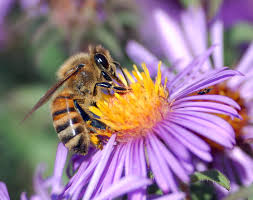
I read KQED’s Do Now “Should we Use Drones to Pollinate Crops?” I was immediately very intrigued by this article, the two questions came to mind: 1. Would this affect animals that already naturally pollinate plants? And 2. Why are drones necessary if we already have natural pollinators? Turns out that beekeepers have reported that there has been a 30% decline in the bee population per year! 😦 This annual decline has greatly affected us because not all fruits and vegetable plants can be pollinated, leaving farmers with a decrease in available produce. 43 of the top food crops are solely dependent on animals (mainly honey bees) for pollination!
Scientists are trying to find other means to pollinate plants. A scientist from Japan, Eijiro Miyako, designed a small drone that is able to pollinate plants. Like the honey bee, the drone flies from plant to plant and has a patch of hair coated in ionic liquid gel that the pollen sticks to.
When I read this, I was worried about our honey bee population! The 30% annual decline can eventually lead to honey bee extinction if something doesn’t change. I think that it is amazing that scientists area able to create technology that will suffice when nature does not. However, I personally think that efforts must be focussed on ensuring that the Honey Bee Population increases, rather than creating a device to replace them. I wonder how much the drone pollinator costs and how accessible it would be. Would the average gardener have a drone, or mainly farmers? I also am curious about how much the drone costs.
Overall, I think that the drone pollinator could be very beneficial! However, we need to look at the current state of the environment and the possible effects of using the drone pollinator.
Click here to read the KQUED Do Now!
